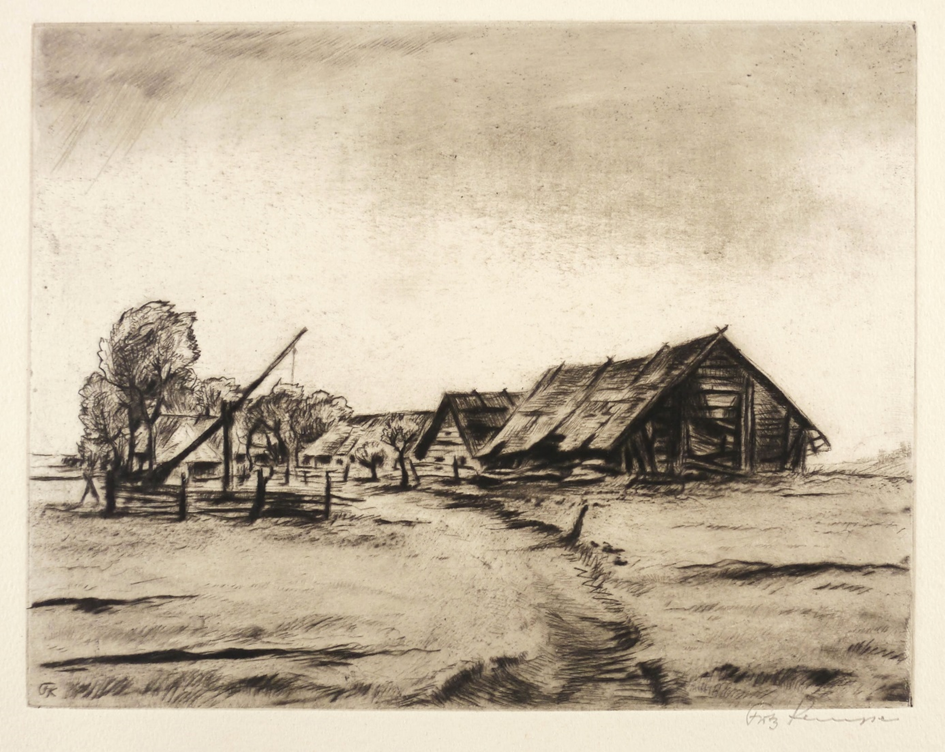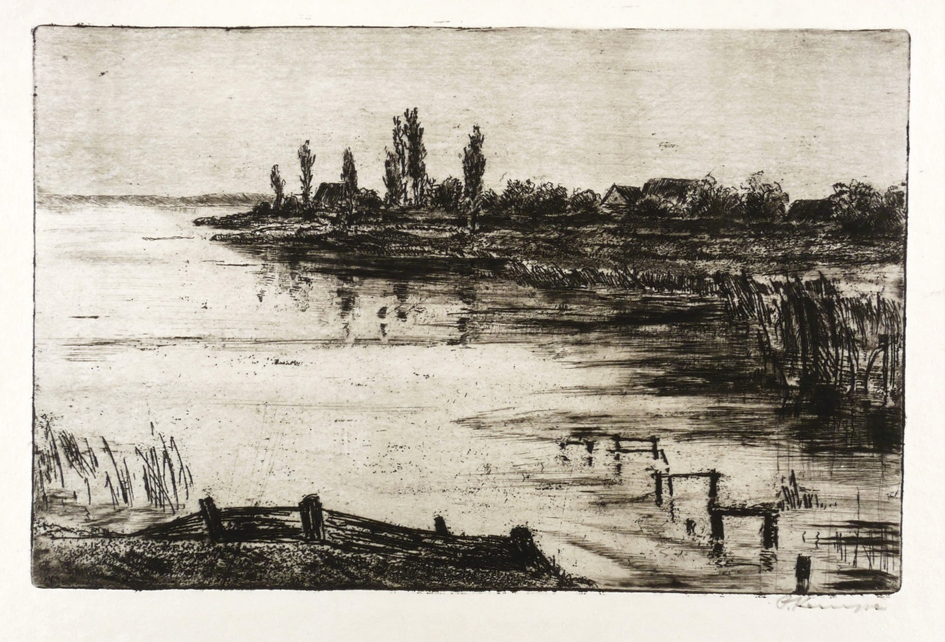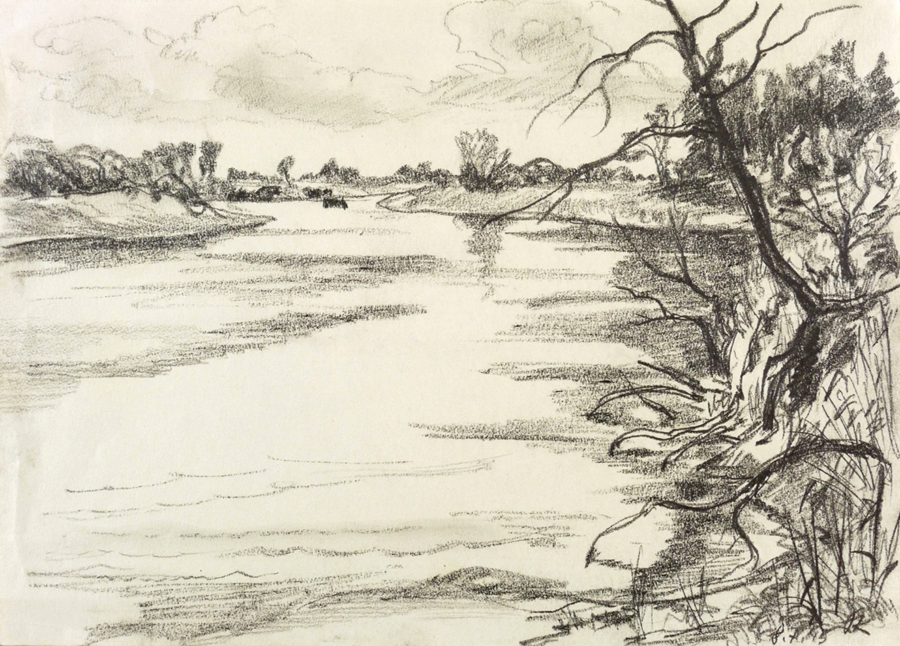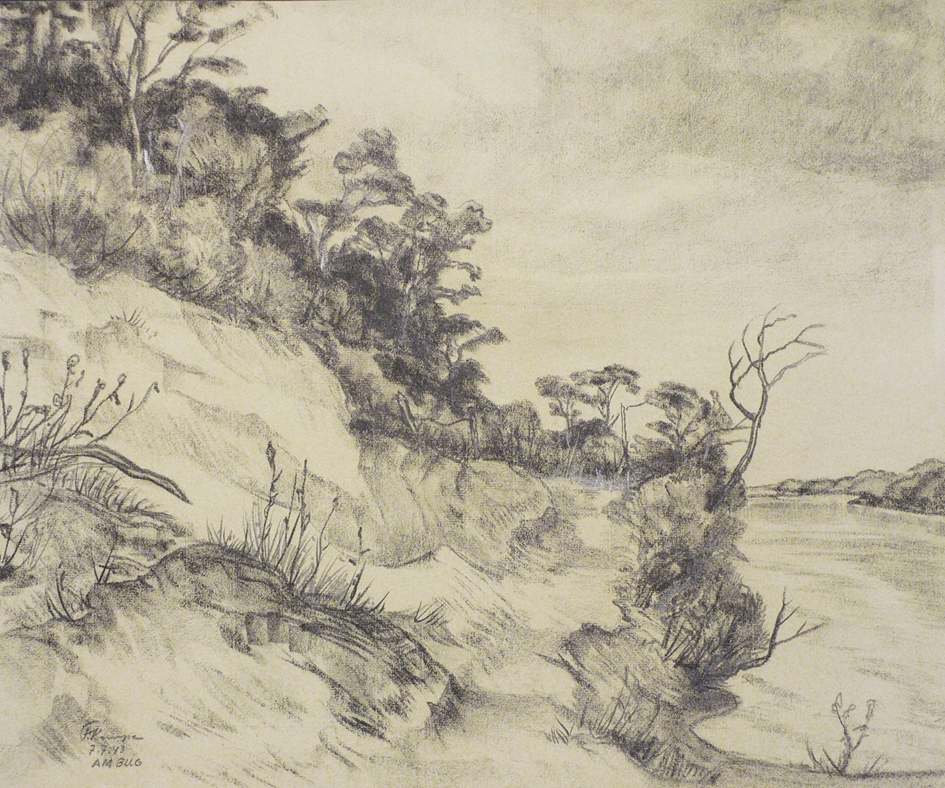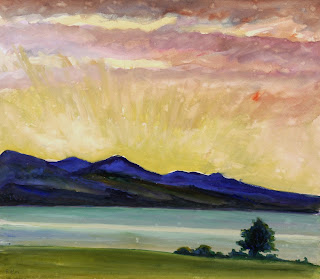Fritz Kempe – a German
painter
©Andrzej Philips
Fritz Kempe was a
renowned German painter, graphic artist, etcher, typesetter, and art educator.
His life and career spanned significant periods in German history, impacting
and being impacted by the two World Wars. Here is a detailed look into his life
and contributions.
Fritz Kempe was born
on December 30, 1898, in Leipzig, Germany, as Richard Johann Fritz. He was the
son of Emil Richard Kempe, a garden architect, and Maria Heyne, born in Kemberg
on July 21, 1867. He started his career with an apprenticeship as a typesetter
at the C. G. Röder company in Leipzig, while
Kempe’s academic
journey was interrupted by World War I when he was drafted into the military on
January 8, 1917. After the war, he resumed his studies and became a master
student of Belwe, Bosert, and Kolb in the master class for etching at the
Leipzig Academy. He also attended lectures on art history and pedagogy at the
University of Leipzig.
From 1922 to 1939,
Kempe worked as an art educator in higher education in Leipzig. Concurrently,
he served as the artistic director at Ferdinand Fickentscher’s hand bookbinding
workshop from 1932 to 1940. His exceptional work in graphics earned him several
accolades, including awards at the International Graphic Show in Chicago
(1935/1936) and the Grand Prix for Graphics at the World Exhibition in Paris in
1937. In 1938, he was honored with the Saxon State Medal.
In 1942, Fritz Kempe
was appointed as a professor. On October 31, 1942, he married Ingeborg Ella
Margarete Meyrich in Leipzig. However, World War II once again disrupted his
life when he was called to serve in the military in 1943. Tragically, in 1944,
his home was bombed, resulting in the loss of a significant portion of his
works.
After the war, in
1952, Kempe relocated to Dresden. He continued his artistic and teaching
endeavors until his death on November 18, 1971, in Dresden.
Fritz Kempe’s life was
marked by his dedication to the arts and education. Despite the interruptions
and losses caused by the world wars, his work in graphics and bookbinding
remains influential. His contributions as an educator helped shape future generations
of artists, and his recognition through various prestigious awards underscores
the impact of his work in the field of graphic arts.
Each of Kempe's drawings is signed in pencil in the lower left corner,
often with a monogram. His drawings, etchings, and lithographs frequently
depict fishermen and coastal landscapes.
Kempe's legacy is
preserved through the works that survived the war and the students he mentored
throughout his career. His artistic style and technical prowess in etching and
book arts continue to be celebrated and studied.
As stated above, Fritz
Kempe served in the German army from 1943 to 1945. In what capacity is unknown.
One thing is certain: he was primarily an artist and dedicated his free time
from military service to painting. These are sketches of landscapes from the
areas of Małaszewicze and Terespol, suggesting that he served in a military
unit operating at the Małaszewicze airfield.
 |
Today's Małaszewicze
is located on the southern side of the railway tracks, where the first
residents began to settle in 1924. The development of the new settlement was
influenced by the establishment of a military airfield, located between the
villages of Małaszewicze Duże and Małaszewicze Małe, the railway tracks, and
the present-day Małaszewicze.
The airfield had
14 hangars and a settlement for the military airfield staff and their families.
Modern bombers such as the Łoś, belonging to the 220th Bomb Squadron among
others, were stationed here, and they were equipped with radios in
Małaszewicze. These aircraft became targets for Luftwaffe attacks on the first
day of World War II. The bombings resulted in 40 casualties among the airfield
personnel, leading to a decision to evacuate the airfield towards Romania.
Starting in 1940, the
Germans rebuilt and expanded the airfield. This was made possible by the forced
labor of about a thousand Jews from a labor camp existing in Małaszewicze Duże
from 1942 to 1944. These Jewish forced laborers were executed in Kobylany in
1944. The Małaszewicze airfield had strategic significance for the Luftwaffe
operating on the Eastern Front, particularly during Operation Barbarossa.
Transport gliders like the Messerschmitt Me-321 and aircraft like the
Messerschmitt Me-323 Gigant were stationed here. After World War II, the
Małaszewicze military airfield first functioned as a Soviet airfield and from
1952 as a Polish airfield, before the aircraft and airfield personnel were
relocated to Okęcie.
"Farm with a draw well" and Near Terespol (Polish Landscape)", Fritz Kempe (1943)
Same landscapes as those painted by Kempe can still be seen, although there are fewer of these wooden cottages.
One of the drawings also depicts a church in Valozhyn near Minsk (Belarus). Valozhyn is a town in the Minsk Region of Belarus, located 75 km (47 mi) northwest of the capital Minsk.
The church was consecrated in the name of Saints Constantine and Helen on July 18, 1866. In 1875, a poorhouse was established at the Church of Saint Constantine and Helen.
In 1876, the church
underwent major repairs, after which donations were collected for the
improvement of the temple. In 1886, with the collected funds, the entire
interior middle part of the church was paneled and painted with oil paint. On
the ceiling above the altar, a painting in the form of a dove in radiance,
representing the Holy Spirit, was created. Under the dome, an iconographer
painted the image of the Holy Face of the Savior with two cherubim on either
side.
References:
- Kempe, Fritz, Sächsische
Landesbibliothek Staats- Und Universitätsbibliothek Dresden, Spezial Katalog
zum schriftlichen Nachlass Fritz Kempe, Compiled by Kerstin Schellbach, 2007.
- https://de.wikipedia.org/wiki/Fritz_Kempe_(Maler)
- radzima.org
https://en.wikipedia.org/wiki/Valozhyn
The article is subject to copyright - use requires the author and the source of the article. Artykuł podlega prawom autorskim - korzystanie wymaga podania autora i źródła artykułu.


